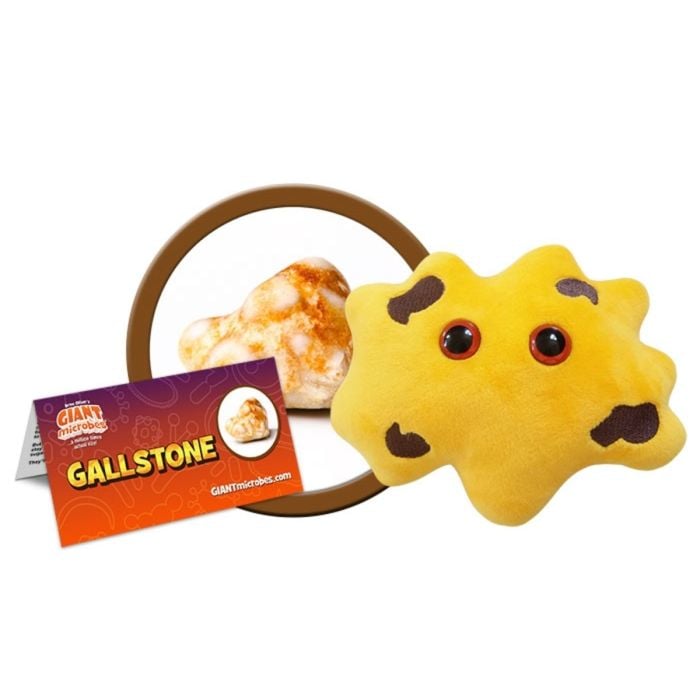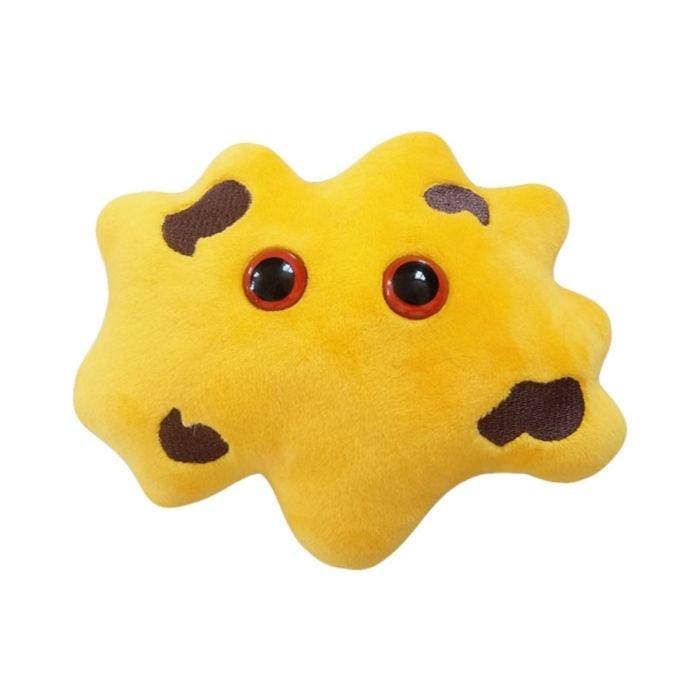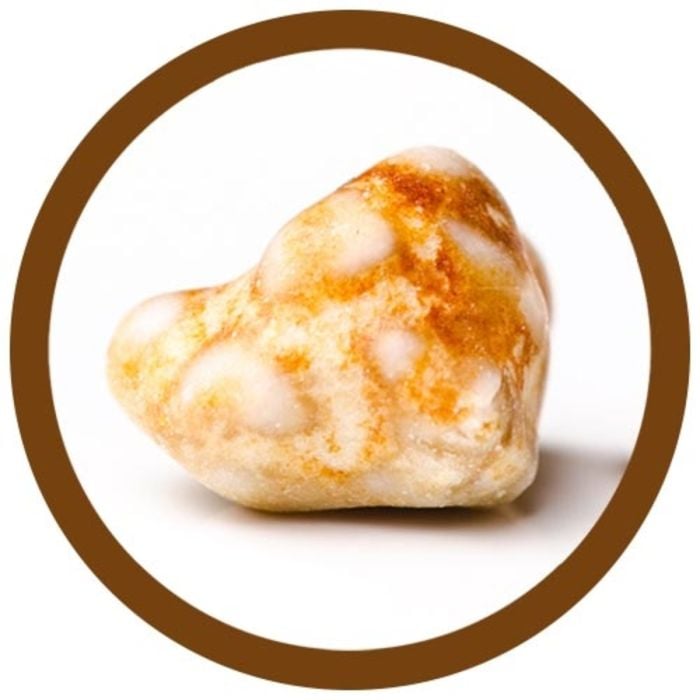Gallstone
Out of Stock
This adorable plush representation of a Gallstone helps spread awareness about this ailment and how it impacts your health. GIANTmicrobes Gallstone is soft, cuddly and makes a memorable get well gift for loved ones post-surgery. Give a soft touch and good feeling to those with Gallbladder issues.
Makes a unique gift for surgeons, doctors, students, teachers, GI professionals and anyone with a healthy sense of humor! Features detailed stitching, high quality materials and an educational printed card with fascinating facts about this ailment.
Size: 13 x 10 x 5cm
Product Details
Additional Information
| Sizes | Giantmicrobes are based on actual microbes, cells, organisms and other critters, only 1,000,000 times actual size! Gigantic (GG) 40-60cm XL (XL) 25-38cm Original (PD) 12-20cm Keychain (KC) 5-10cm with clip |
|---|---|
| Materials | Plush from all new materials. Stuffed with polyester fiber fill. Surface washable: sponge with water & soap, air dry. |
| Packaging | Each plush microbe includes a printed card with fun, educational and fascinating facts about the actual microbe or cell. |
| Safety | Every product meets or exceeds U.S. and European standards for safety. For ages 3 and up. |
All about Gallstone
FACTS: Gallstones are hardened clumps of bile. Bile is a dark green to yellowish brown fluid produced by the liver, stored in the gallbladder, and then deposited into the small intestine to aid digestion.
Gallstones vary in size from a grain of sand to as large as a golf ball. Some people develop just one gallstone, while others develop many at the same time. Gallstones may cause no signs or symptoms, and require no treatment. However, if one becomes lodged in the neck of the gallbladder this can cause inflammation. Blockage of the bile duct can cause jaundice and infection. And if gallstones block the pancreatic duct this can lead to inflammation of the pancreas. People with a history of gallstones also have an increased risk of gallbladder cancer.
Symptoms of gallstones include nausea, fever, yellowing of your skin and eyes, and pain in your abdomen, shoulders or back. Medications are available, but the definitive treatment is surgery to remove the gallbladder.
There are two types of gallstones, cholesterol gallstones and pigment gallstones. Gallstones composed mainly of cholesterol are the most common. They are yellow and form when excess cholesterol crystallizes into stones. So a major risk factor for gallstones is eating too much fat and not enough fiber. Taking medications that contain estrogen may also increase the risk.
Pigment gallstones appear dark brown or black and these form if your bile contains too much bilirubin, a chemical produced when your body breaks down red blood cells. This may occur from liver cirrhosis, biliary tract infections and blood disorders. Another cause of gallstones is if your gallbladder doesn't empty correctly. Bile may become very concentrated, contributing to the formation of gallstones.







